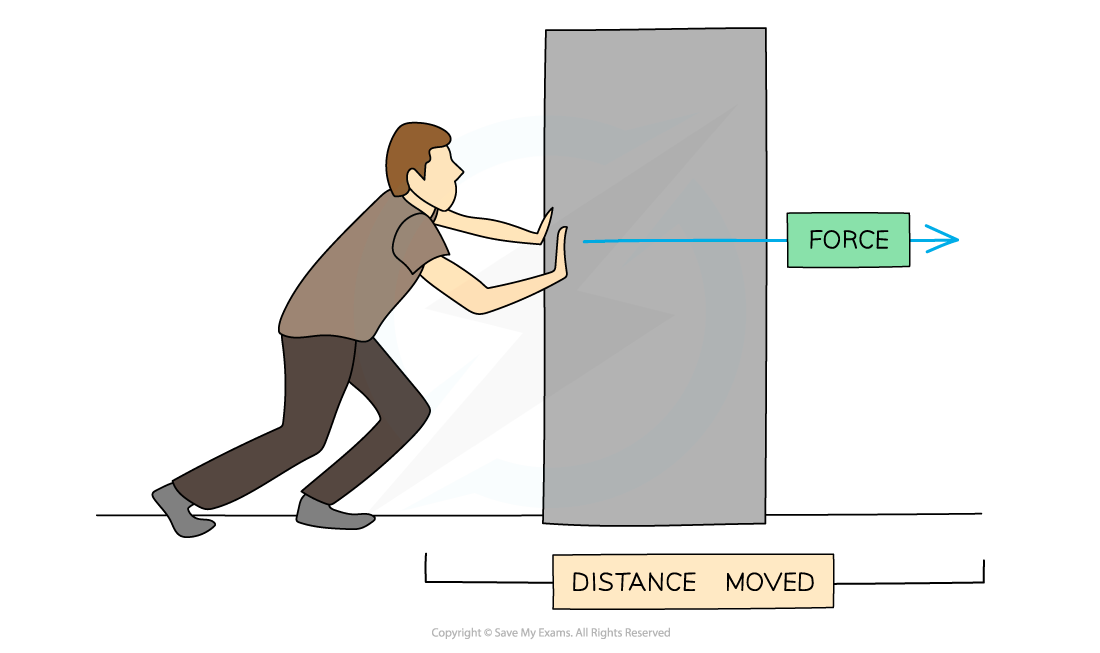Work & Energy (Cambridge (CIE) AS Physics): Revision Note
Exam code: 9702
Work done
In physics, work is done when an object is displaced by an external force applied in the direction of its displacement
Where:
W = work done in newton metres (N m) or joules (J)
1 N m = 1 J
F = force in newtons (N)
s = displacement of object in metres (m)
In the diagram below, the man’s pushing force on the block is doing work as it is transferring energy to the block (increasing its kinetic energy)
Man pushing a block

Work is done when a force is used to move an object over a distance
When work is done, energy is transferred
Work done is equal to the amount of energy transferred
Usually, if a force acts in the direction that an object is moving, then the object will gain energy
If the force acts in the opposite direction to the movement, then the object will lose energy
Worked Example
The diagram shows a barrel of weight 2.5 × 103 N on a frictionless slope inclined at 40° to the horizontal.

A force is applied to the barrel to move it up the slope at constant speed.
The force applied is parallel to the slope.
How much work is done in moving the barrel a distance of 6.0 m up the slope?
A. 7.2 × 103 J
B. 2.5 × 104 J
C. 1.1 × 104 J
D. 9.6 × 103 J
Answer:
Step 1: List the known quantities
Weight, FW = 2.5 × 103 N at 40°
It is helpful to use FW for the force of weight since W is used for work done
displacement, s = 6.0 m
Step 2: State the work done equation
Step 3: Calculate the force in the direction of travel
The force, FA, applied to push the barrel needs to overcome the component of the barrel's weight that is parallel to the slope
Since the force is parallel to the slope, the component of weight to consider is that which is parallel to the slope

Step 4: Substitute the known values into the work done equation to calculate
Therefore, the correct answer is D
Examiner Tips and Tricks
A common exam mistake is choosing the incorrect force which is not parallel to the direction of movement of an object. You may have to resolve the force vector to find the component that is parallel. The force may not always be in the same direction as the movement, as shown in the worked example.

Unlock more, it's free!
Did this page help you?